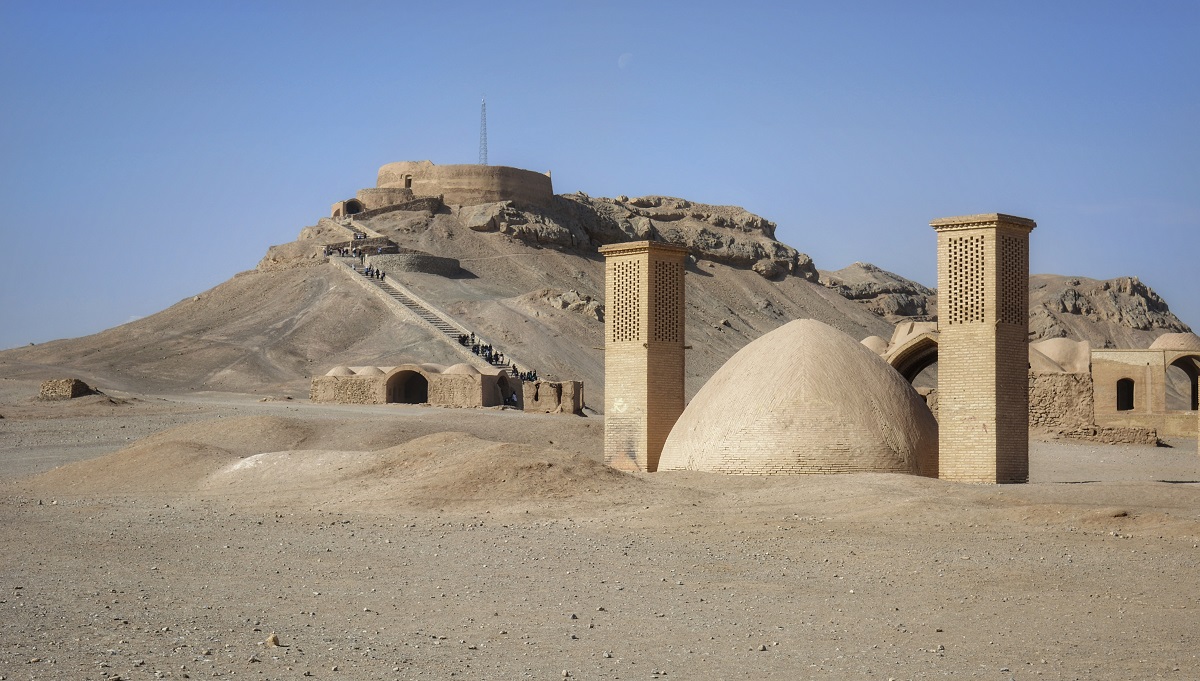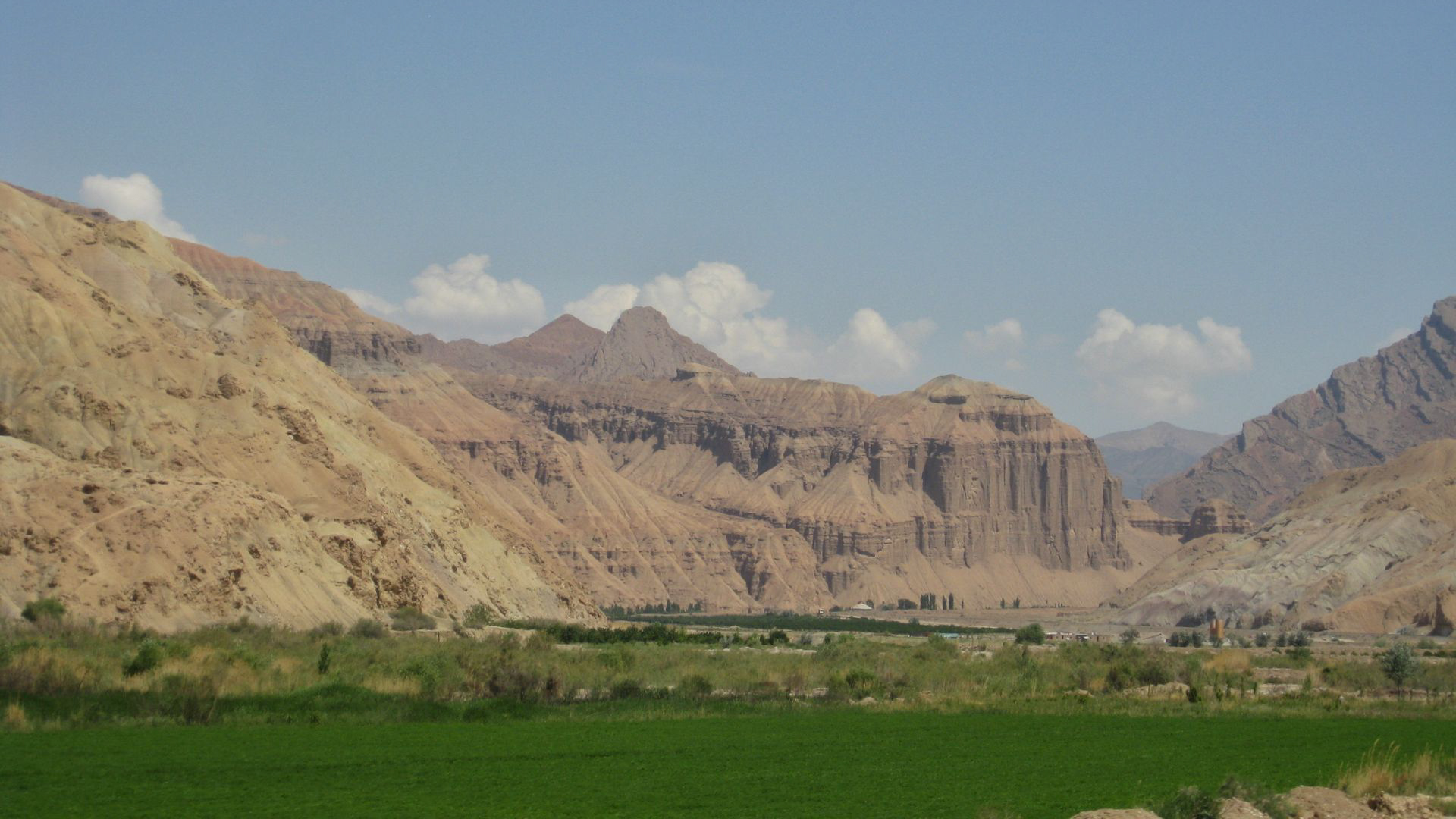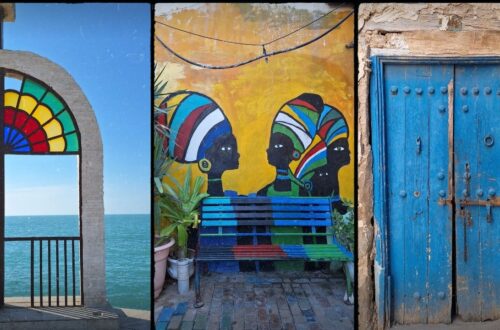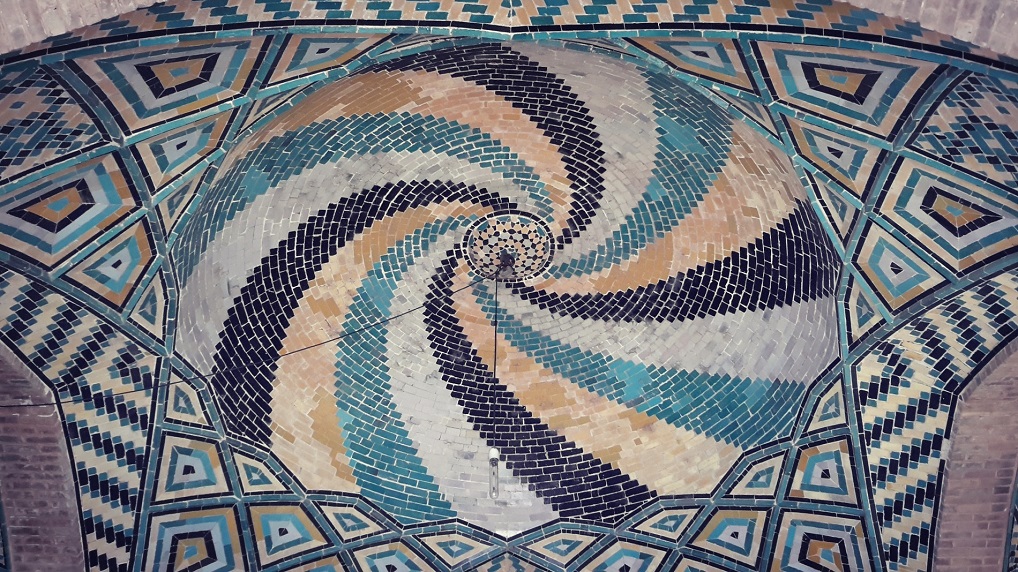
Travelling Iran: What to See in Yazd
Yazd had been my favorite destination in Iran (until I discovered Qeshm island), and I always recommend it to everyone who travels to Iran. Located on the edge of a desert, it impresses travelers with its unique mud-brick architecture, very different from Isfahan, Shiraz or Tehran. I have been to Yazd two times and would love to visit it again because every time I discover more and more (and of course, I don`t mind adding a couple of bowls or other Yazd ceramics to my collection). However, traveling to the city of wind-catchers is not only about visiting Yazd itself – there are plenty of religious, historical and natural sights scattered all around Yazd. But that`s another story. In this article I`ll share an overview of the attractions inside the city plus an insider`s tip for the best timing of traveling to Yazd. Make sure to read it up to the end!
Old Town
The Old Town in Yazd is where most historic sights and tourist attractions as well as hotels and restaurants are located. However, there is no need to visit every historical building in the area, just close your guide book and see where the alleys will take you. The Old Town is the best place to feel the spirit of the mud-brick city and get lost in the maze of narrow alleys of the old town.

Anyway, in the Old Town of Yazd there are a few places you wouldn`t want to miss. And Jame` Mosque is one of them. Jame` Mosque (or masjed-e jame` in Persian) can be by no means compared to mosques in Isfahan, however, that`s where you can find some peace, rest and shadow under the turquoise dome. An interesting fact about this mosque is that if you take the stairs down on the other side of the mosque`s yard, you can see a qanat, a part of the ancient underground system of irrigation invented and still in use in Iran. Qanats help deliver water to villages, gardens and fields all around the city without letting water to dry out. This particular qanat is the longest in the world and covers 71 kilometers. It starts off at Fahraj village outside Yazd, then goes all the way under Yazd and Jame` mosque and on to the village of Zarch. Moreover, in 2016 it was submitted to UNESCO`s World Heritage List.
Yazd is known as a city of wind catchers (badgir in Persian) or wind towers which used to be constructed for air conditioning. Although you`ll see wind catchers almost above every house in the Old Town, they are not used in modern houses any more. If you want to see the highest wind tower in the world and experience what it feels like to stand under a wind tower, head to Dowlatabad Park where beside enjoying a walk in the park, you can see the 33-meter wind catcher in action as well.
Last but not least, you can`t miss seeing the Old Town from a rooftop. Almost every traditional hotel, some cafes and restaurants have a way to the rooftop, from where visitors can enjoy the view on the historical quarter. Although, it`s fun to wander on a rooftop among wind towers, the panoramic view of the Old Town itself is quite plain and colorless. The only building that actually stands out is Jame` mosque with its high minarets and turquoise dome.
Zoroastrian Sights
Before turning to Islam, Iranians believed in Zoroastrianism, one of the oldest monotheistic religion in the world which dates back to 3500 years ago.
In Zoroastrianism all four nature elements – fire, earth, water and air – are treated with high respect; and the fire, actually, stands out being the symbol of the religion. The fire plays a great role in all Zoroastrian rites and is the central piece in Zoroastrian temple which are called atashkadeh or ‘fire place’ – in temples the fire is kept on 24/7. You can find fire temples in many cities, even in Tehran, however, due to a big community of Zoroastrians in Yazd, the one in Yazd remains the most famous and the easiest to get in.
Inside the fire temple in Yazd there is a small museum which somehow helps to understand the basics of the Zoroastrianism and take a subtle look at its traditions and rites. And of course, the central piece of the whole place in the fire which is preserved in a separate room and you can take a look at it only from outside a special window.
Another thing that might draw your attention at the fire temple is a man with two wings at the entrance. That`s another symbol of Zoroastrianism called “fravahar”. It identifies Ahura Mazda, the holy spirit worshiped by Zoroastrians who created the whole world, and is always accompanied by the basic idea of Zoroastrianism – “good thought – good word – good deed”, which actually can be applied to any religion in the world – not only do the right thing, but also never let bad thoughts in your mind, and you will succeed in being a good person.
As I`ve mentioned before, all four nature elements are sacred for Zoroastrians, that`s why they can`t bury bodies of the dead in the ground, put them in water or fire in order not to pollute these elements. So they`ve come up with another solution – they used to build high round towers on top of which they used to leave the bodies for the vultures to eat their flesh. Later the bones used to be placed in a pit in the center of the tower where they would dispose. A curious fact about this burial ritual is that bodies of men, women and children used to be kept separately on different circles. Among foreigners these towers are known as Towers of Silence while in Persian they are called dakhmeh. Nowadays, these towers are not used anymore for many reasons, and the one you`ll visit in Yazd is open to visitors. Present-day Zoroastrians, at least in Iran, bury the dead in the ground, in cemented graves in order not to pollute the earth.

In many tour plans you might also see the name of another Zoroastrian temple, Chak-Chak. It`s located outside Yazd, between Kharanagh village and the city of Ardakan. Zoroastrians believe that when Muslims invaded Iran, the daughter of the last Sassanian Shah fled to Ardakan and hid in the mountains where she built a fire temple. Apart from being a historical sight, it`s the place where ceremonies for one of the biggest Zoroastrian holidays called mehregan take place.
However, from my point of view, Chak-Chak can be easily skipped by travelers, because it`s just a tiny temple in a cave and probably making all the way to it won`t actually worth it.
Best Time To Visit Yazd
Yazd is located on the edge of a desert, that`s why summers here are unbearably hot, but winters are surprisingly cold. The best timing is no different from the most part of Iran – the weather is the most comfortable here in spring (March-April) and in autumn (October-November). However, there is one tiny exception here which you may use to get a deeper experience of Iranian culture that many tourists, unfortunately, try to escape.
Yazd and the villages around it hold unique mourning ceremonies which take place during the month of moharram which can`t be seen anywhere else in Iran. Nowadays Iranian culture is getting more and more affected by the Western culture and lifestyle, but this kind of ceremonies reveal the true Iran which is hardly seen in major cities now and the basic principles of Iranian culture – sharing and selflessness.
I have never witnessed moharram ceremonies in Yazd, but here is a video which will give you the idea of what to expect.
View this post on Instagramچند ساعت انتظار، براي ديدن اين سي ثانيه . مي ارزيد #نخل_برداري #نخل_گرداني #تفت #عاشورا #يزد
The month of moharram is moving every year, but in 2019 the main ceremonies which take place on the days of Tasua and Ashura will be held on September 9-10. So if you don`t want to miss this unique event, plan your trip accordingly.




2 Comments
D McConville
Hey there! I’m trying to find someone in Tehran to pay to find old photographs and videos from the 1970s. Might you be able to help? Do they have flea markets where this kind of thing would be? Thanks!
D McConville
Thank you!